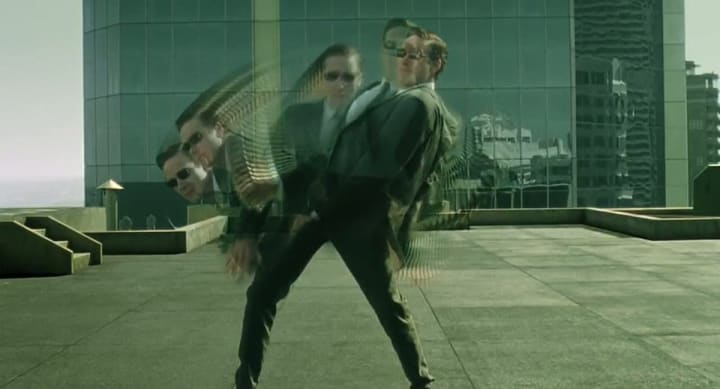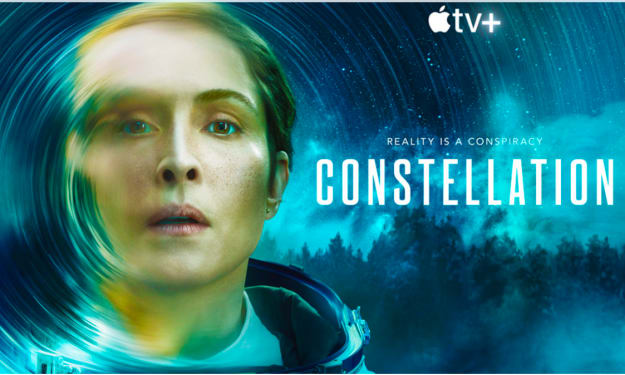Balancing Fears of Artificial Intelligence with Sci-Fi
'Star Trek,' 'Star Wars' and 'The Matrix' show us different views of artificial intelligence, from the friendly to the terrifying.

“Let me put it this way, Mr. Amor. The 9000 series is the most reliable computer ever made. No 9000 computer has ever made a mistake or distorted information. We are all, by any practical definition of the words, foolproof and incapable of error." - HAL 9000 in 2001: A Space Odyssey
After seeing how HAL 9000, the artificial intelligent computer of director Stanley Kubrick’s film, acted in 2001: A Space Odyssey, it’s no wonder many of us are fearful of the rise of machine smarts or the coming influence and social change with the advent of AI. Add to Kubrick’s chilling, poetic classic the bloody carnage of The Terminator moves from James Cameron or amusement park wonderland turned into a nightmare torture land in Michael Crichton’s Westworld and Futureworld, and it’s a wonder we don’t simply ban advanced robotics and machine learning in general. But, of course, there’s far more AI found in the wonders of sci-fi. It’s a literary balance of different, yet also a beneficial implementation of AI, which comes into dramatic play.
Scientists and philosophers warn us - Artificial Intelligence may be man's last invention. If true machine smarts are achieved, will AI overtake us or terminate us alas so many cautionary sci-fi tales? Now, real science is catching up to speculative fiction. It's not exactly a rosy outlook.
But what does the dream factory of Hollywood offer in its depiction of the folly or favor of AI? Star Wars, Star Trek and The Matrix are three of the biggest sci-fi franchises in history. They posit a reality where artificial intelligence is everywhere, yet balance a fictional view - machine brains assist mankind, but also threaten us. Droids are companions, but can also become enemies. A Matrix imprisons us, but a cyber hero liberates us. Sci-fi isn't all about rampaging Terminators or Agent Smiths - it's also about cute R2-D2 and the multi-faceted, human loving Lt. Data.
Star Wars - Cuddly Droids

These are the droids we’re all looking for! Who wouldn’t want the cute as chrome, bullet shaped R2-D2 or his yammering, golden boy buddy C-3PO? Maybe C-3PO needs a personality upgrade or an outright swap, but the fact remains the gleaming guy usually gets the job done. If it’s translating an obscure language or posing as a fabled god of prophecy for a furry teddy bear race, C-3 is your main humanoid construct.
R2-D2 may not have his uptight partner’s flair for the dramatic, and you’d have to use a Rosetta Stone app to decipher what he’s bleeping and beeping about, but if you need to ferry an important hologram to your rebel alliance, R2’s the droid to employ. Above all the details of what R2 and C-3 can do or assist with, there’s one particularly comforting thing about them: They’re friendly.
George Lucas crafted a high tech world where robots - or droids - are all welcoming and highly cooperative. They don’t appear deceptive or plan to suddenly wrest control away from Han Solo or Luke Skywalker and start giving the orders. Or even worse, make an alliance with the Emperor and turn their AI circuits over to service of the dark side. Many psychological studies have supported the theory that human beings simply can’t abide being talked down to or feel inferior alongside an artificial construct which exhibits intelligence or even the semblance of it. Now Star Wars fans have embraced a new droid, BB-8, who is basically a beeping beach ball. He’s faster than R2, and arguably cuter, but is he hiding a nefarious agenda to subvert humans? Only time (and many expensive sequels) will tell us for certain!
Star Trek - Data’s Database

“I have often wondered about my own mortality, as I have seen others around me age. Until now, it has been theoretically possible I would live an unlimited period of time. And although some might find this attractive, to me it only reinforces the fact that I am... artificial.” - Data
When the original Star Trek warped onto TV back in the 1960s, Captain Kirk talking to a computer and getting an answer was pretty far out. It’s pretty commonplace today, even mundane. We talk to cell phones and PC's daily now. They talk back and provide us with directions and cooking tips and all sorts of things. Apple’s Siri and Google may not be truly intelligent, but they’re helpful. In 1987, when Star Trek: The Next Generation continued Gene Roddenberry’s vision onward, we saw Enterprise crew members talk to a decidedly more intelligent and helpful AI construct.
Lt. Commander Data, the yellow eyed android, was brought to artificial life and played by actor Brent Spiner. Unlike Luke Skywalker’s droids operating in a galaxy far, far away, Data wasn’t property to be owned nor sold off to the highest bidder. He even attended Starfleet Academy and excelled at his studies. Data doesn’t only think for himself and doesn’t need the programming of lesser smart machines, he also oversees and gives orders to crew and even assumes command of Enterprise from time to time.
Data is so intent on becoming human, he’s even dated an Enterprise crew member. Perhaps most poignantly of all, he creates a ‘daughter.’ When android Lal (Halle Todd) is introduced to the Enterprise D crew, it’s not exactly smooth sailing, and in the end, the father loses his child in a true tearjerker. Data, in pursuit of the experiences which make a human being, still can’t really feel his loss - but he keeps on trying, he keeps on stumbling around to get it right. What could be more human?
Perhaps the most reassuring aspect about Data is his committed pursuit to achieving recognition in the arts. He dabbles in painting and plays the violin at the symphony level. Despite the skill involved, which any construct could achieve with a proper amount of time or programming, he actually yearns to get better to share his accomplishment with his human crew mates. How can we fear an artificial life form who is a true Renaissance man?
The Matrix and The Day The Earth Stood Still

Keanu Reeves’ most profitable and popular movie series neatly flips the whole human race vs artificial intelligence trope. Instead of humanity birthing and bringing forth a singular, highly advanced AI construct, we find humanity has been swallowed whole by machine intelligence. We’ve become biological playthings or living batteries to a massive AI network.
This may be the most nightmarish of all the scenarios ever presented on screen when contemplating artificial intelligence run amok. Amassing a rebel force against rampaging Terminators or other droids threatening us is one thing, but how do you transform all of human society back to its natural form?
While Reeves as mysterious Neo tries his best to become humanity’s cyber savior, we’re bolstered by his fighting back through grit and determination. We’re also encouraged and emboldened by Morpheus played by Laurence Fishburne. Morpheus takes Neo by the hand and through practice, and the same high tech hijinks which powers the Matrix itself, turns him into a cybernetic Ninja warrior.
The Matrix paints a dark, alternative future for mankind. It posits the notion that our own computers, robotics and artificial intelligence will one day enslave us - both literally and figuratively. Yet in its most dire, darkest hour, our humanity not only reasserts itself, but becomes the most powerful weapon against the supercomputer simulation the Matrix uses to enslave humanity.
Of all the many movie science fiction depictions of artificial intelligence and its power and influence over society, perhaps the classic The Day The Earth Stood Still explores one of the most convincing or even plausible.
Extraterrestrial Klaatu (Michael Rennie) comes to Earth in his spinning disc and along with him is a towering robot, Gort. After Klaatu is injured and becomes incapacitated, Gort is summoned to save him and make Earth’s military realize the mission Klaatu and Gort are on should be taken quite seriously.
The alien angle and dramatic extraterrestrial visitation is obviously still pure speculation, however, the creation of robot security guards - highly advanced drones armed with powerful weapons - is an issue we must grapple with in our own real world. Drones are real. Drones kill people. What if we created a super race of robotic soldiers who could and would take the law into their own hands? What if we even permitted it and encouraged the rise of this droid like police force?
Farewell To The Master, written by Harry Bates, is the short story which The Day The Earth Stood Still is based upon. Written in 1940, a startling revelation is made at close of the sci-fi tale. It’s made clear Klaatu and his humanoid aliens are not in command at all. In fact, they are in service to Gort and his droid race. The machines now command humanoids, keeping them safe, but also keeping them locked in servitude. Would Earth pledge to be commanded by a superior robotic race, as long as we were promised peace and prosperity for all time?
About the Creator
Will Stape
Screenwriter, book author, and producer. Wrote for 'Star Trek: The Next Generation & Deep Space Nine,' and has created docudramas for cable TV and the web.






Comments
There are no comments for this story
Be the first to respond and start the conversation.